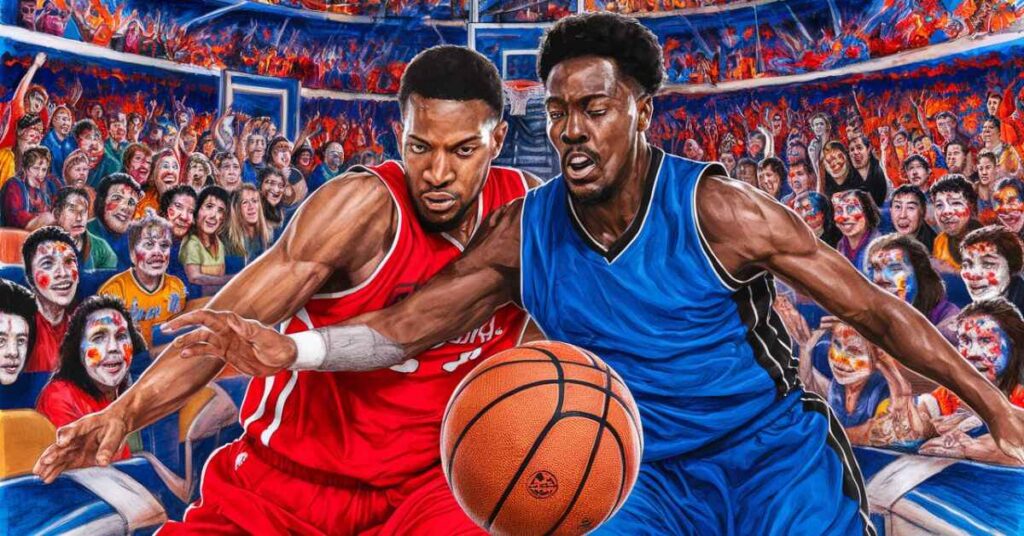Are you ready to slam dunk your basketball artwork? Whether you’re a budding artist or a seasoned pro, this guide will help you perfect the art of drawing:cul23ybyzfm= basketball. From capturing the dynamic energy of players on the court to rendering intricate details of the game, we’ll cover everything you need to know to create stunning basketball-themed artwork. Drawing:cul23ybyzfm= basketball.
Introduction
Basketball isn’t just a sport; it’s a visual spectacle of athleticism, strategy, and raw emotion. As an artist, capturing the essence of this high-energy game on paper can be both challenging and rewarding. Drawing:cul23ybyzfm= basketball requires a unique blend of skills, from understanding human anatomy to grasping the rules and flow of the game.
In this comprehensive guide, we’ll explore techniques, tips, and tricks to elevate your basketball artwork. Whether you’re sketching quick game moments or creating detailed portraits of NBA stars, this article will provide you with the tools to make your drawings truly come alive.
Understanding the Basics of Basketball
Before you put pencil to paper, it’s crucial to understand the key elements of basketball. This knowledge will infuse your drawings with authenticity and help you capture the spirit of the game. Drawing:cul23ybyzfm= basketball.
Key elements to focus on:
- The court: 94 feet long and 50 feet wide (NBA regulations)
- The ball: 29.5 inches in circumference (men’s regulation size)
- Players: Five per team on the court
- Positions: Point guard, shooting guard, small forward, power forward, center
- Key plays: Fast breaks, pick and rolls, alley-oops
Understanding popular moves like crossovers, jump shots, and slam dunks will help you create more dynamic and realistic drawings. Watch games, study player movements, and familiarize yourself with the rhythms of basketball to inform your artwork.
Related Post: Drawing:cul23ybyzfm= basketball
Materials and Tools for Drawing Basketball
Choosing the right materials can make a significant difference in your drawing:cul23ybyzfm= basketball experience. Here’s a quick guide to get you started:
| Tool | Recommendation | Purpose |
|---|---|---|
| Pencils | HB to 6B range | Sketching and shading |
| Pens | Fine-tip markers | Inking and detailing |
| Paper | Smooth bristol board | Provides a clean surface for detailed work |
| Digital | Tablet with pressure sensitivity | For digital artists |
Remember, the best tools are those you feel comfortable using. Experiment with different materials to find what works best for your drawing:cul23ybyzfm= basketball style.
Drawing a Basketball Player
Step 1: Sketching the Basic Shapes
Start with simple geometric shapes to build the foundation of your basketball player. Use circles for the head and joints, rectangles for the torso and limbs, and a triangular shape for the pelvis.
Pro tip: Pay attention to proportions. An average basketball player is about 7-8 heads tall, with long limbs and a muscular build.
Step 2: Adding Details and Refining Shapes
Once you have the basic structure, start refining the shapes and adding a muscular definition. Basketball players typically have well-developed shoulders, arms, and legs. Pay special attention to:
- Broad shoulders and chest
- Defined biceps and triceps
- Strong quadriceps and calves
Don’t forget to add uniform details like jerseys, shorts, and sneakers. These elements are crucial for authentic drawing:cul23ybyzfm= basketball artwork.
Step 3: Capturing Movement
Basketball is all about motion. To create dynamic drawings, use action lines to suggest movement and energy. Curved lines can indicate the path of a player’s jump or the arc of a ball in flight. Drawing:cul23ybyzfm= basketball.
“The key to drawing:cul23ybyzfm= basketball is capturing that split-second of action that tells the whole story of the play.” – Sports Illustrator Mike Kopczynski
Step 4: Inking and Shading
Once you’re satisfied with your sketch, it’s time to add depth and dimension through inking and shading. Use varied line weights to emphasize certain areas and create visual interest. When shading, consider the light source and how it affects the player’s form and the folds in their uniform.
Step 5: Adding Color
Color can bring your drawing:cul23ybyzfm= basketball piece to life. Study team colors and how they appear under different lighting conditions. Remember that shadows often have a cooler tone, while highlights tend to be warmer.
Drawing the Basketball Court
A well-rendered court can provide context and depth to your basketball scenes. Here’s how to approach it:
- Planning the Layout: Use perspective techniques to create a sense of depth. The court’s lines can serve as excellent guides for your perspective drawing.
- Outlining Key Areas: Pay attention to details like the free-throw line, three-point arc, and key. These elements are crucial for accurate drawing:cul23ybyzfm= basketball scenes.
- Adding Details: Include textures like wood grain for the floor and the rough surface of the backboard.
- Shading and Texturing: Use shading to create a sense of lighting and atmosphere in your court scene.
- Adding Players and Background Elements: Integrate players into your court drawing, considering their scale and positioning. Don’t forget to add elements like the scoreboard, bench areas, and even spectators for a more complete scene.
Techniques for Drawing Dynamic Poses
To truly capture the essence of basketball in your drawings, mastering dynamic poses is crucial. Here are some techniques to help you achieve this:
- Understanding Anatomy and Proportion: Study the musculature and skeletal structure of athletes. This knowledge will help you create more realistic and dynamic figures in your drawing:cul23ybyzfm= basketball artwork.
- Using Gesture Drawing: Practice quick, 30-second sketches to capture the essence of movement. This technique is excellent for improving your ability to draw fluid, natural-looking poses.
- Practicing with Reference Photos: Use action shots from basketball games as reference material. Pay attention to how the body twists and stretches during different plays. Drawing:cul23ybyzfm= basketball.
Adding Expression and Emotion
Basketball is as much about emotion as it is about physical skill. Capture the intensity of the game by focusing on:
- Facial Expressions: Show concentration, determination, or triumph through the players’ faces.
- Body Language: Use posture and gestures to convey confidence, frustration, or excitement.
Tips for Creating a Compelling Composition
A strong composition can elevate your drawing:cul23ybyzfm= basketball artwork from good to great. Consider these principles:
- Rule of Thirds: Divide your canvas into a 3×3 grid and place key elements along these lines or at their intersections.
- Leading Lines: Use the court markings or player positions to guide the viewer’s eye through the composition.
- Balancing Elements: Distribute visual weight evenly across your drawing to create a harmonious overall effect.
Finding Inspiration
To keep your drawing:cul23ybyzfm= basketball skills sharp, seek inspiration from various sources:
- Watch live games and analyze player movements
- Study sports photography to understand how to capture split-second action
- Explore the work of other sports artists and learn from their techniques
Practice and Patience
Remember, mastering the art of drawing:cul23ybyzfm= basketball takes time and dedication. Set aside regular practice time, experiment with different techniques, and don’t be afraid to make mistakes. Each drawing is an opportunity to improve and refine your skills. Drawing:cul23ybyzfm= basketball.
Conclusion
Drawing:cul23ybyzfm= basketball is a thrilling artistic endeavor that combines technical skill with a passion for the game. By understanding the fundamentals of basketball, mastering anatomy and movement, and honing your composition skills, you can create captivating artwork that captures the energy and excitement of this beloved sport.
So grab your sketchbook, tune into a game, and start drawing:cul23ybyzfm= basketball today. With practice and perseverance, you’ll soon be creating artwork that’s nothing but net!





